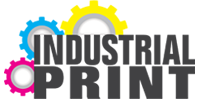By Melissa Donovan
Print service providers (PSPs) working with corrugated board benefit from automated finishing techniques, whether they are placed inline, near line, or offline. Space constraints determine which configuration is ideal, as does the type of jobs normally printed. For shops where corrugated isn’t their only material used in house, a finishing device capable of handling multiple types of media is preferred.
Prime for Automation
Automated finishing presents efficiencies in a print shop no matter the material being finished. Corrugated board in particular is a prime candidate for automation—on both the front and back end of the finishing process.
“Automation in finishing isn’t just a productivity booster—it’s a strategic necessity for modern corrugated print operations looking to meet faster deadlines, tighter margins, and growing demand for customization,” attests Chris Manley, president, Graphco.
Automation is critical in both the front and back end of the corrugated print process, according to Keith Verkem, national sales manager/senior product manager, Colex Finishing Solutions Inc.
“For PSPs, automating the back end reduces labor demands and increases consistency and speed. At the front end, automation streamlines job preparation and reduces setup times and errors, which is essential for handling short runs. Automating front-end file preparation through to back-end cutting is key to meeting customer expectations,” agrees David Preskett, VP EMEA & APAC, Kongsberg Precision Cutting Systems.
Corrugated materials feature unique characteristics, mainly due to their size and structural integrity. As such, “they require precise handling to prevent damage during production. Automated material handling is designed to manage these complexities, allowing efficient feeding and stacking without the need for manual intervention or risk of human error. Therefore, automation is an ideal way for PSPs to improve efficiency and stay competitive in the corrugated market,” suggests Preskett.
According to Scott Nelson, manufacturing operations manager, Infinite Motion Control, an often overlooked benefit of automation is the reduction of human touch. “This reduces damage and increases productivity as the automation is keeping up with the hardware, not a human setting the pace.”
Martin Thornton, executive sales manager, Zund America, Inc. says that “consequently, automated processes help ensure precise registration and consistent output quality all while improving productivity. Automation also allows for better material utilizing through optimized prepress functions—nesting, as well as precision cutting, reducing waste, and improving sustainability.”
“Corrugated is often used in high-volume applications. Automating finishing—cutting, creasing, stacking—not only reduces manual labor but also ensures consistency and speed. This means faster turnaround times, fewer errors, and the ability to scale operations efficiently. Corrugated’s rigidity and repetitive formats make it ideal for automation, especially when integrated with digital workflows,” continues Verkem.
Space Considerations
Working with corrugated board can be awkward, the material itself is bulky and unwieldy. PSPs need space and a flexible production process.
“Corrugated production generally requires considerable quantities of larger sheets that are bulky and have a tendency to get crushed or warped, which necessitates suitable storage space as well as staging areas for material loading/unloading and pre/post-production handling. Especially for smaller print shops, space is likely to become a prime consideration,” notes Thornton.
In many print shops, especially those that don’t handle corrugated, space is a premium, points out Verkem. Here a modular or hybrid system might be the best choice. “It provides flexibility to switch between substrates—corrugated, foamboard, or acrylic—without dedicating floor space to a single-use machine. For PSPs with diverse jobs, a multi-material cutter with quick-change tooling is more cost effective and space conscious.”
“A hybrid system reduces the need for multiple machines, saving floor space and cutting overhead costs. With one table, you can complete jobs faster and expand into new areas like event displays, branded packaging, and interior graphics—using the same team and equipment,” advises Manley.
Preskett stresses versatility. “Ultimately, opting for a system capable of handling a range of media helps PSPs stay agile, ready to handle corrugated jobs when needed, without limiting their broader production capabilities.”
A dedicated solution isn’t a bad idea if the demand is there, but modular solutions allow for scalability. “A versatile, easily adaptable digital cutting system with tooling suitable for any number of different graphics substrates dramatically improves return on investment—short and long term—in addition to saving space,” explains Thornton.
Get in Line
Inline, near line, offline—where to insert finishing in the production process is a careful consideration of pros and cons. When it comes to corrugated finishing, the stakes are a bit higher due to the nature of material.
Inline
Inline finishing is when the finishing device is directly connected to the printer.
According to Manley, “inline systems offer the most automation, reduce labor, and improve consistency by minimizing manual handling. They’re ideal for long runs and high-volume signage, often requiring less floor space.”
Nelson finds automation designed inline to be the most efficient way for workflow.
The advantage is a seamless workflow, notes Thornton—with no need for manual intervention between printing and finishing.
“Inline finishing is ideal for high-volume, standardized jobs. It minimizes handling and speeds up production but requires significant investment and space,” cautions Verkem.
While inline finishing offers high efficiencies by keeping everything in a single workflow, Preskett notes it is not only more expensive but also offers less flexibility when adapting to different job types or materials.
Another disadvantage is speed mismatch. “More often than not, digital printing and finishing differs in speed, which leads to inevitable slowdowns in one or the other,” suggests Thornton.
Near Line
Near-line finishing is when the finishing device is separate but close to the printer. It may be connected via conveyors or automated mechanisms.
“Near line offers a balance—machines are connected but not physically integrated. This allows for flexibility in job scheduling and easier maintenance,” says Verkem.
Flexibility is the main theme. As Preskett explains, a near line setup decouples the finishing process from the printer. “This setup also reduces downtime because if one system requires maintenance, the other can continue operating independently, maintaining overall productivity.”
Thornton says near-line finishing is ideal for “medium- to high-volume production with varied job complexity, where automation is a priority, but inline is not practical.”
Offline
Offline is when finishing is completely separate from the printer. Jobs may be stacked and move manually between two stations.
For maximum flexibility, turn to offline. “Different finishing equipment can be used depending on job complexity. Each system operates at its maximum speed, avoiding slowdowns of one or the other,” shares Thornton.
“Offline finishing reduces the risk of system-wide disruption, as issues in one stage won’t impact others, and supports modular upgrades for future scalability. However, it does involve manual media handling, which can slow throughput, and may require more floor space,” notes Preskett.
Best Approach
For corrugated signage, near line is often the sweet spot—efficient yet adaptable, suggests Verkem.
“For corrugated packaging and signage applications, there is a shift to near-line systems, featuring automatic load and unload but are not connected to the printer,” explains Preskett.
Flexibility in Finishing
Flexibility in finishing is one of the axioms every PSP should strive to achieve. Working with a hybrid finishing device that is positioned near line provides one of the most efficient corrugated processes.
Sep2025, Industrial Print Magazine



